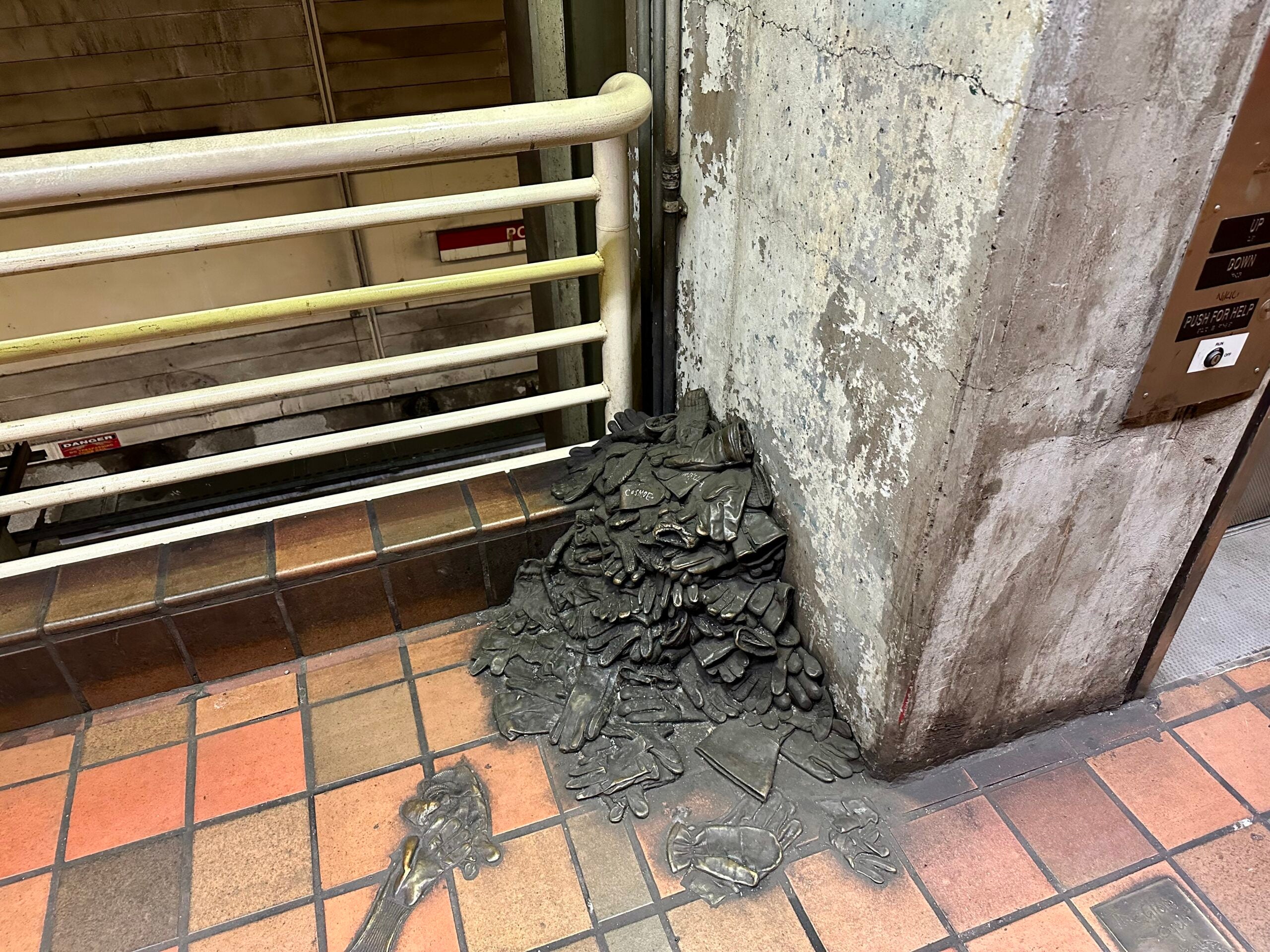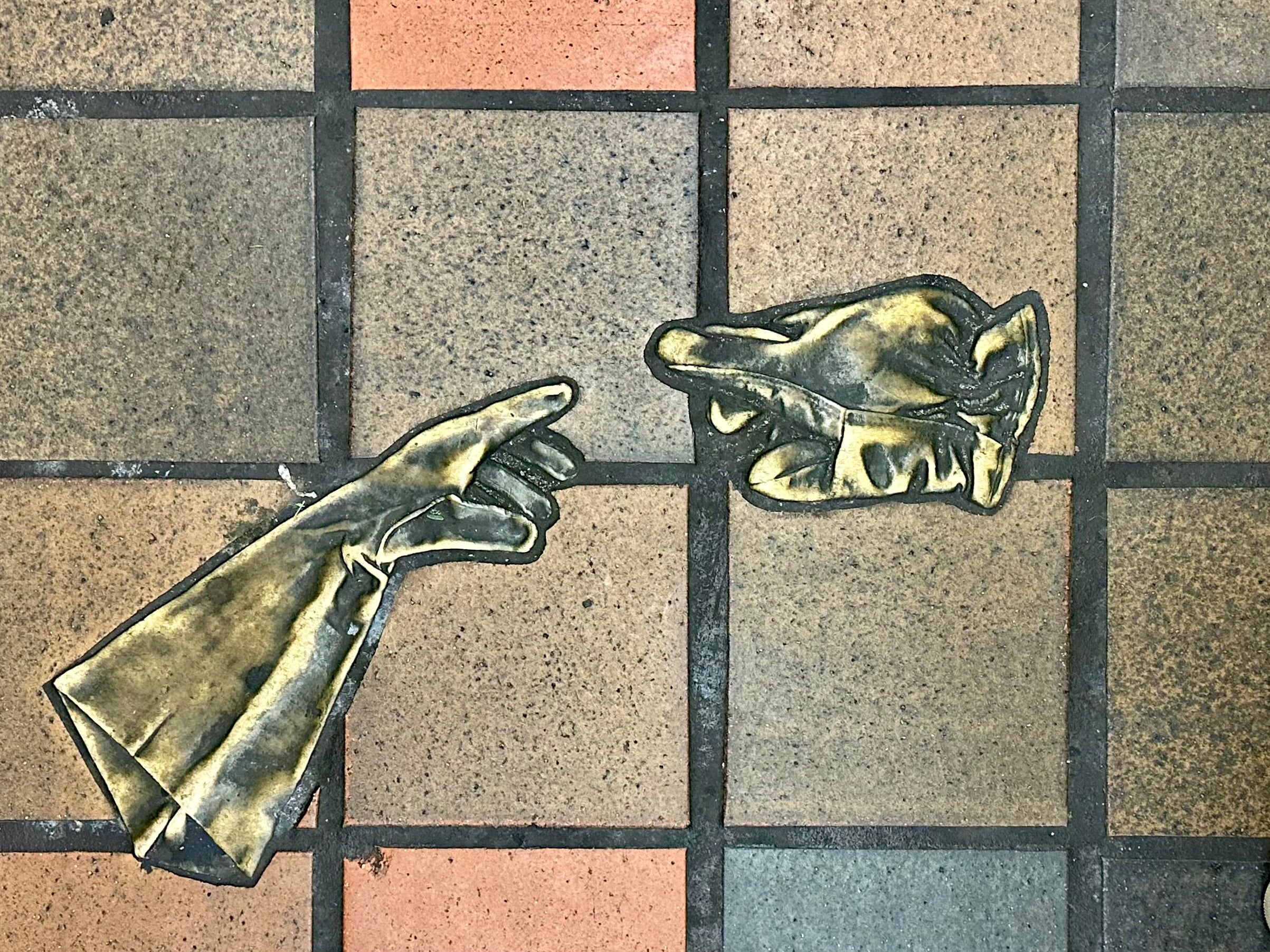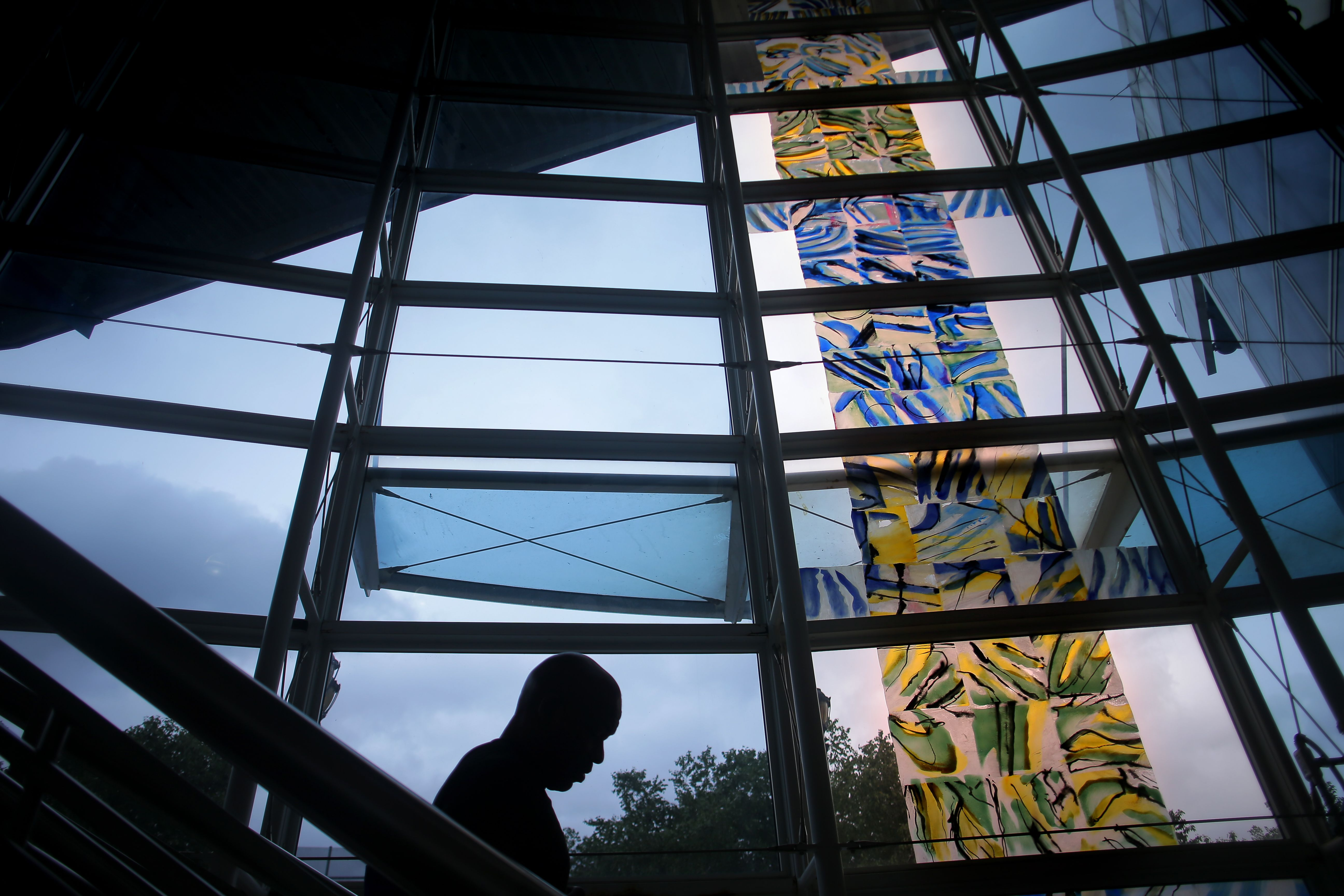Wickedpedia
“It is an open-ended story and many stories are told about it.”
The bronze gloves cascade down the median strip of the 143-foot escalator as it descends from street level to the Porter Square train platform. Gloves holding hands, gloves crumpled and tossed, gloves reaching for each other in a cheeky homage to Michelangelo’s “The Creation of Adam.” On the platform, more gloves sit piled in a corner heap and pressed into the tile floor. While commuters rush through the station on their way from Point A to Point B, the gloves remain frozen in time and space — whimsical and a bit mysterious.
The MBTA and the Cambridge Arts Council commissioned Cambridge-based artist Mags Harries to create the “Glove Cycle” installation more than 40 years ago; it was unveiled when the Red Line stop opened in 1984. All told, there are over 50 bronze gloves throughout the station.
“I saw this as a narrative, starting with the intro at the top of the escalator and finishing down in the inbound platform,” Harries explained in an email. “My intention is not to bring beauty, but to create a piece that is relatable … the gloves are extensions of the body.”


On a quiet afternoon inside Porter Square Station last month, commuters rode the escalator — the longest in the MBTA system — down to the platform. Small children reached out to touch the gloves on their way down. Adults, too, seemed to take notice.
“It’s playful,” one commuter said appreciatively of the installation. “It gives a sense of spatial awareness.”
“I love it,” another T rider agreed. “It spruces up the day.”
Harries attributes “Glove Cycle”’s enduring popularity to the endless interpretations riders have ascribed to it over the years.
“It is an open-ended story and many stories are told about it,” she wrote. “One day while returning to Porter square, a person had placed a chocolate kiss in each glove. I have seen lost gloves artfully arranged among the pieces.”
Throughout her career, Harries has created public art pieces that are free and accessible. She prides herself on “taking art out of the rarified museums into the street.”
Other art at T stations
“Glove Cycle” is one of the best-known pieces of public art on the T, but by no means the only one. In and around Porter Square Station alone, there are five other works, including the “Gift of the Wind” sculpture at street level and “Ondas,” a carved granite installation inside the station entrance. Like “Glove Cycle,” these pieces were commissioned as part of the Arts on the Line program to add public art to T stations in the 1970s and 80s.
“Following the lead of other world cities such as Stockholm, Paris, Montreal and Moscow, which have incorporated art into their public transportation systems, Arts on the Line is this country’s first and largest program of its kind,” the MBTA boasted in a 1985 brochure.
Arts on the Line added 20 artworks to Harvard, Porter, Davis and Alewife stations for a combined total cost of $695,000 — just 0.5% of the construction budget for the Red Line Northwest Extension of which Arts on the Line was a part. Funding came from the federal Urban Mass Transportation Administration and the National Endowment for the Arts.
The Cambridge Arts Council chose the pieces, which ranged from life-sized cement statues of people outside the brand-new Davis Square Station, to an abstract hanging neon sculpture in Alewife Station. All of the artworks were built to last, and many were by Massachusetts-based artists.
Following the success of Arts on the Line, the MBTA expanded its art collection to include more than 70 pieces along the Red, Orange, Green, Blue and Silver lines and the Commuter Rail. Most of these pieces are still on display today, although a few have been removed.
With the completion of the Green Line Extension, the T used federal money to fund art installations at Medford/Tufts, Ball Square, Magoun Square, East Somerville, Union Square, and Lechmere stations. Each one is designed to complement the specific geography of its station and/or reflect some characteristic of the neighborhood it inhabits.


By and large, though, art is not the MBTA’s top priority these days.
“After many years of disinvestment in the transit system, the MBTA is currently focused on projects directly related to safety and reliability as the T works to rebuild its aging infrastructure,” MBTA spokesperson Joe Pesaturo wrote in an email to Boston.com.
“Still,” Pesaturo wrote, “the MBTA does seek to engage the community and local youth to produce quality public art by proposing designs for art and murals to be installed at various locations.”
At the Orange Line’s Jackson Station, for instance, the local nonprofit Hyde Square Task Force is planning to add new murals by student artists and local residents to complement ongoing renovations to the station.
Whether the presence of artwork inside Boston’s train stations does much to improve the experience of riding the T is an open question. Harries, for her part, sees public art as an important expression and reflection of the city’s character.
“It creates place, memory and a different spirit to our lives,” she wrote. “Our cities are designed to essentially look like each other,” but “artists bring an intimate and unique view into a place.”
Newsletter Signup
Stay up to date on all the latest news from Boston.com









